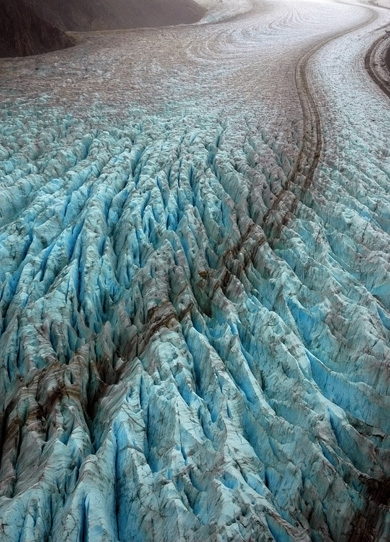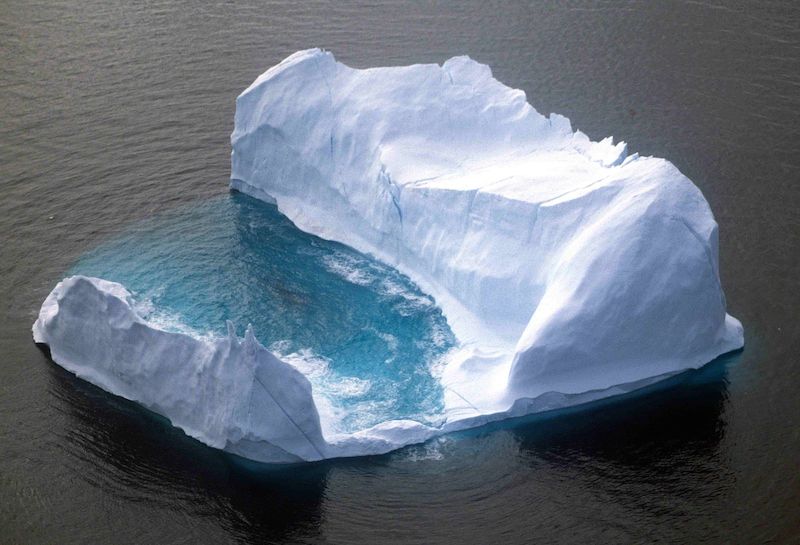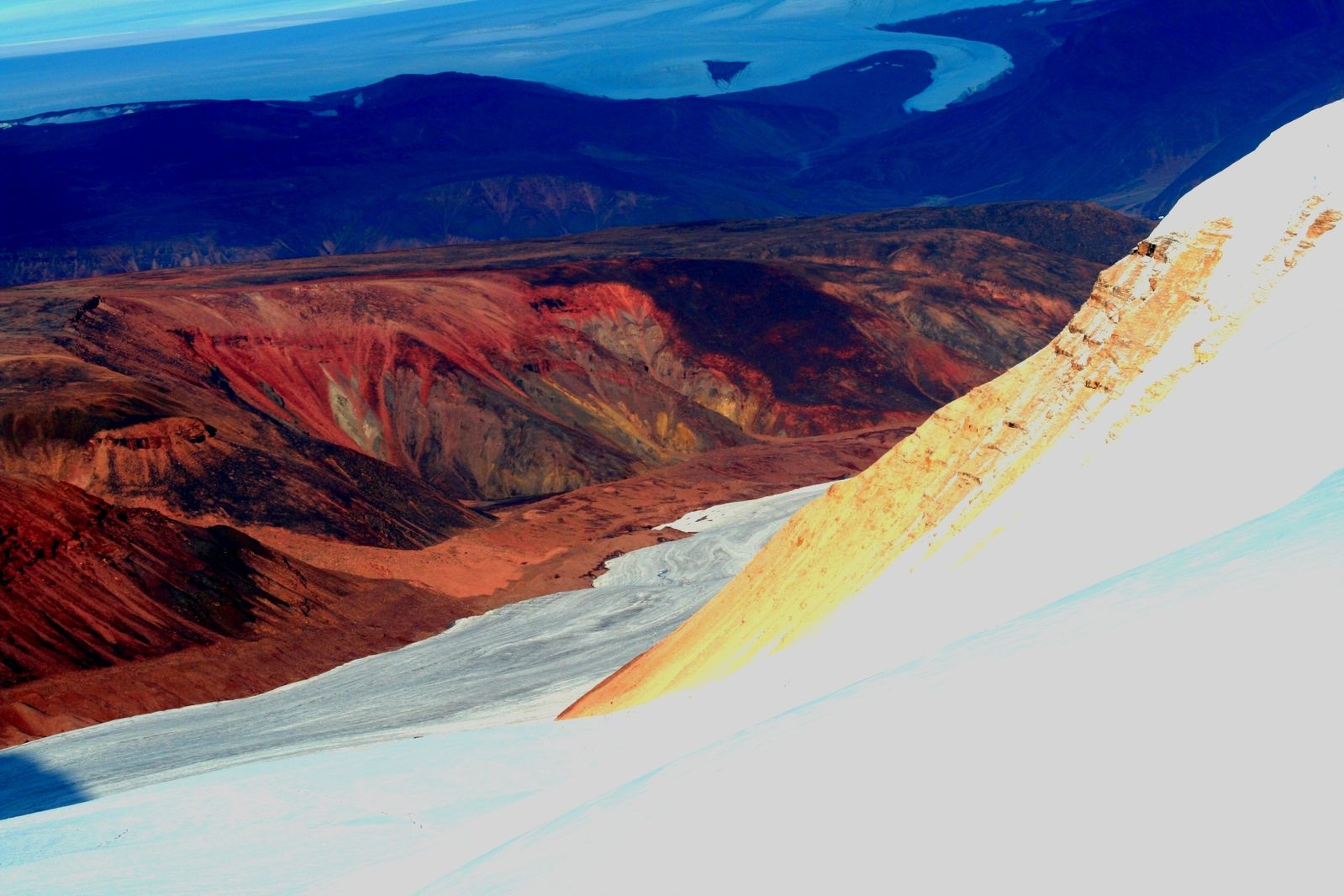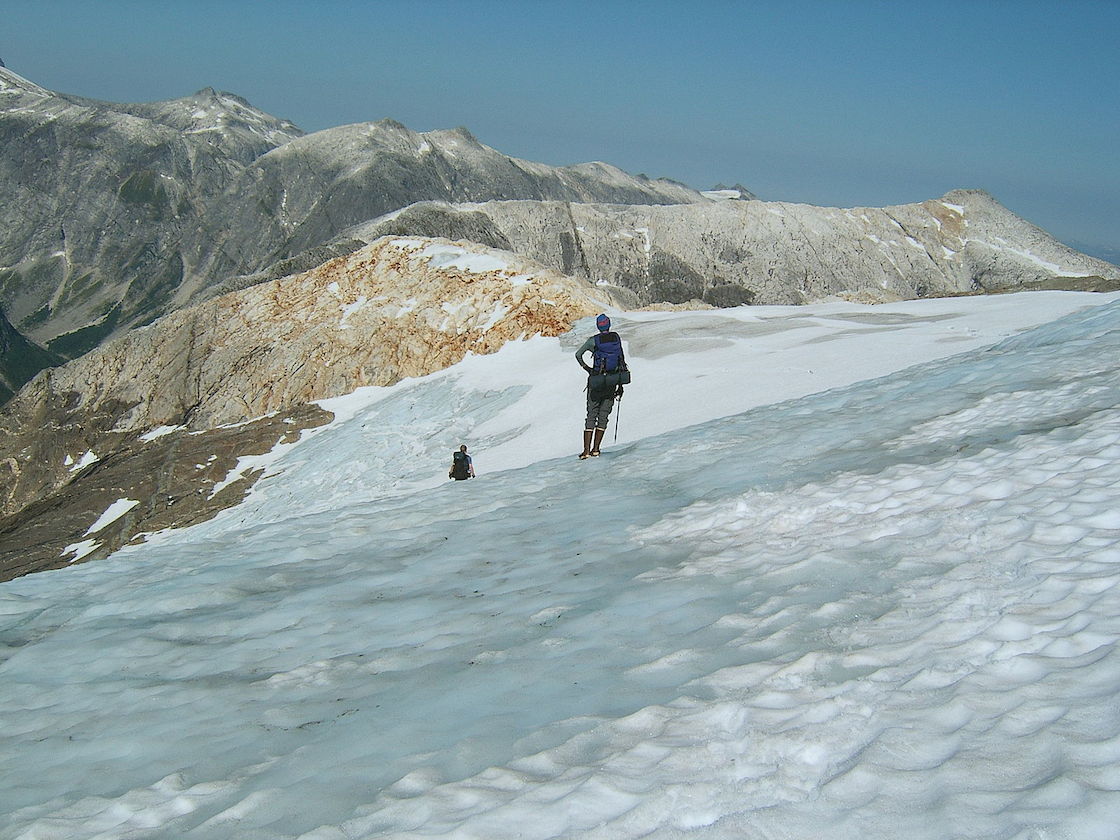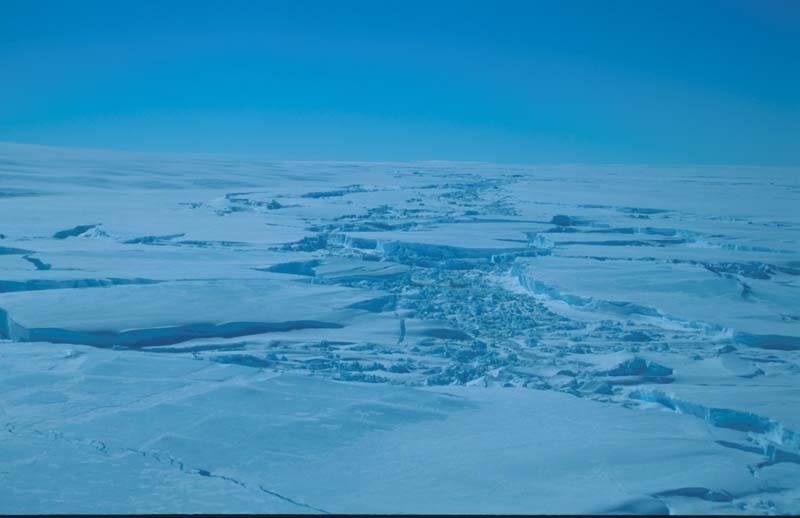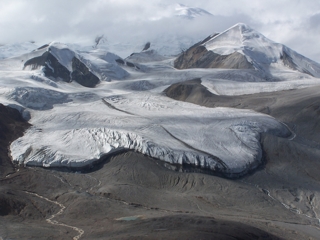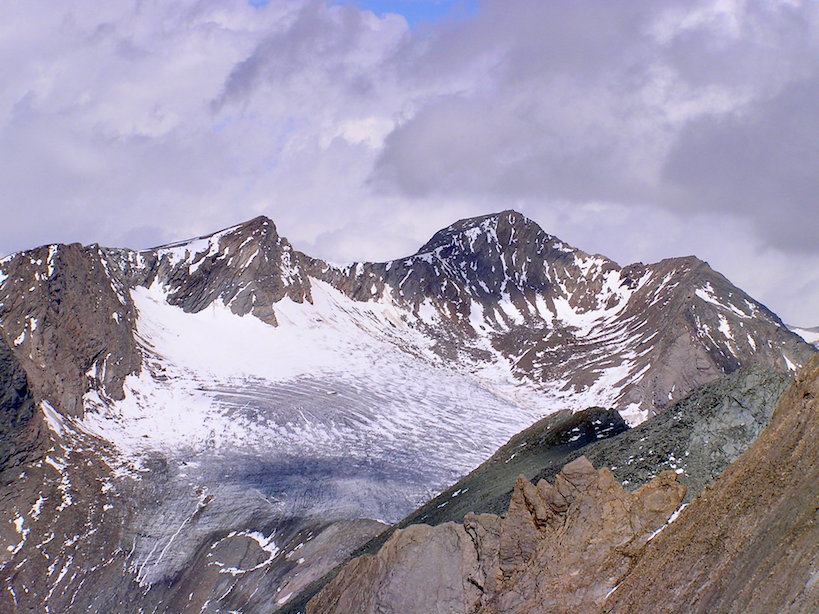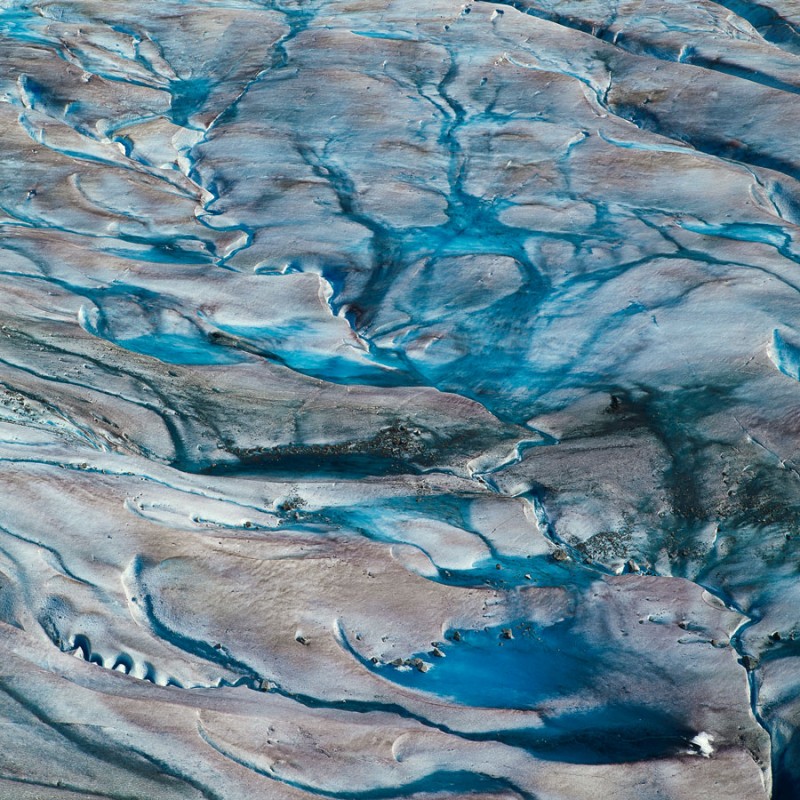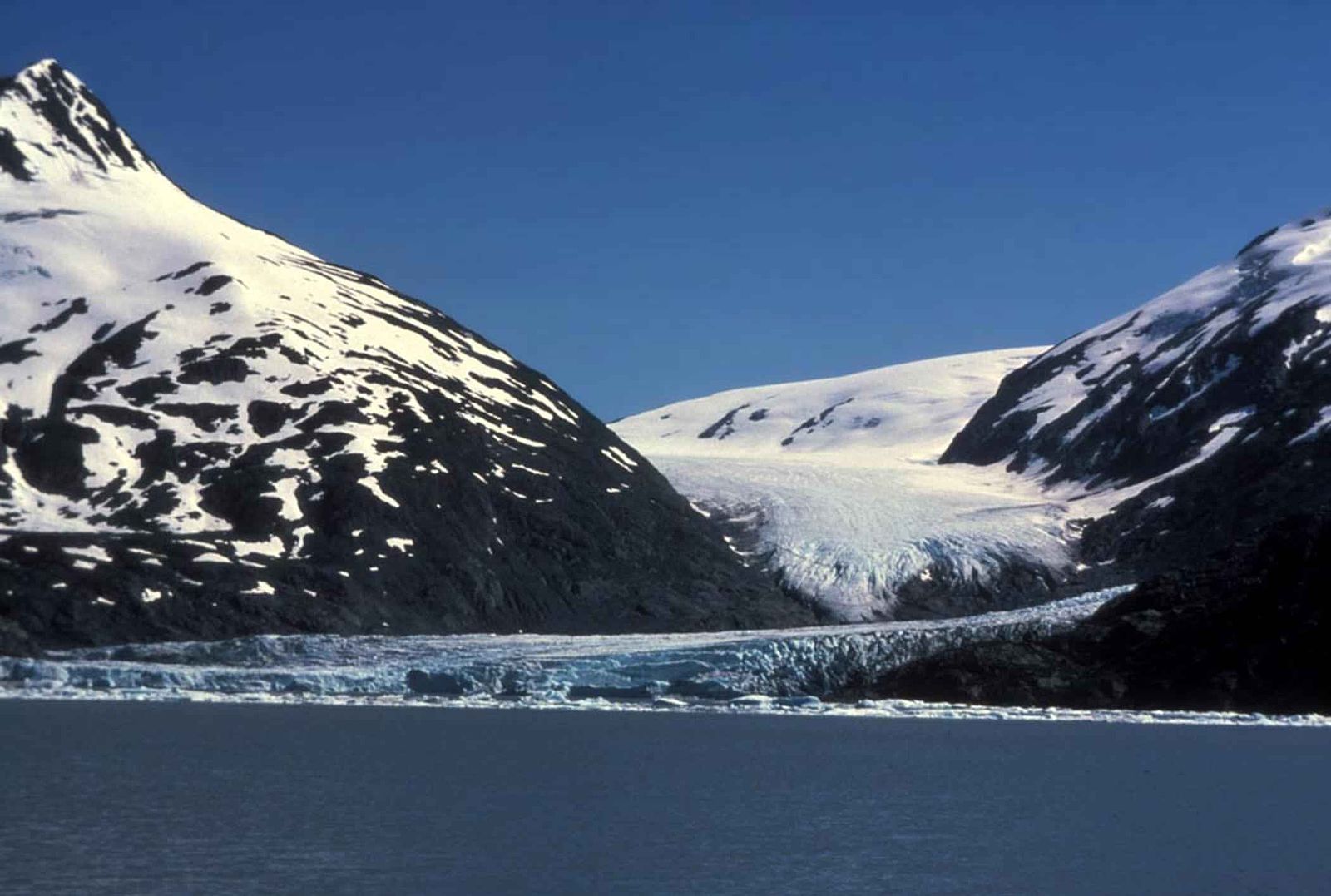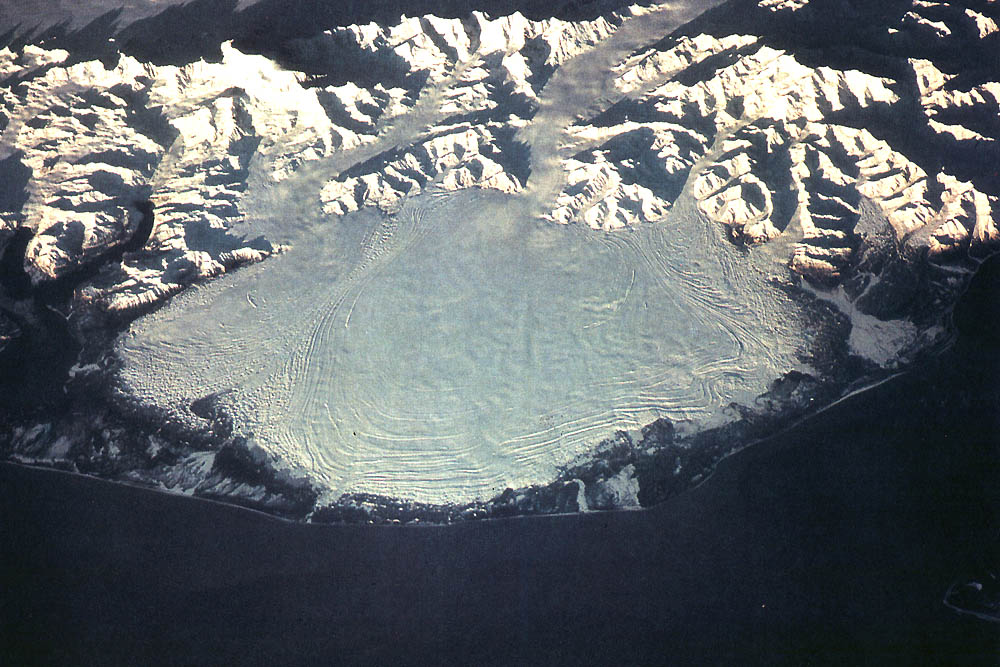The following section displays various glacier types common to Arctic and Antarctic landscapes. For the effects of glaciers on landscapes, see Features Section. Hover over figures for image credit.
Ice Sheet: large regions of glacier ice occurring on land surfaces, with an area of at least 50,000 km2. Ice sheets develop into ice shelves when they meet the intersection of land and ocean.
Ice Shelves: extensive blocks of glacier ice, originally formed on land, transported to the land-ocean interface. Ice shelves form over vast quantities of time, and are made up of pure water.
Iceberg: Regions of ice shelves or ice sheets that have broken off the main continental ice structure into the ocean.
Ice Cap: large regions of glacier ice occurring on land surfaces, with an area less than 50,000 km2.
Ice Stream: areas of ice, from an ice sheet that have flowed further and faster than the surrounding continental ice structure. This process created rapidly moving water in the form of a stream.
Rock Glacier: occurs in regions of little snowfall. The glacier mass is made up of high quantities of rock material with discontinuous ice.
Surge-Type Glacier: a glacier with intense flow patterns with highly contrasting conditions. These glaciers go through rapid flow periods (1-3 years) and slow flow periods (10-100 years). The differential rates of flow between these two periods can be between ten to one thousand fold.
Cirque Glacier: glaciers that occupy wide, round, bowl-shaped zones in mountainous regions. These dipped landscapes act as a catchment for snowfall and avalanche debris. Cirque glaciers are often separated by an eroded ridge, called a Col and these glaciers frequently surround a rock peak called a Horn.
Hanging Glacier: wide glaciers that inhabit steep mountainous slopes, “hanging” onto the steep rock. These glaciers are hazardous as they trigger rockfall and avalanche events.
Outlet Glacier: an opening channel, rapidly moving glacier originating from a glacial dome of ice. These glaciers are large lobe shaped ice structures.
Temperate Glacier: glaciers that exist in temperate regions and have water and ice simultaneously present seasonally or annually.
Tidewater Glacier: glaciers that flow from valley regions to a large lake or ocean environment. Small icebergs break off from this type of glacier into the surrounding tide-influenced body of water.
Valley Glacier: glaciers that flow from ice sheets, icefields or mountain glaciers into a deep valley environment from gravitational pull. Often, these valley glaciers move ice material from land into the ocean. Valley glaciers are separated by sharp ridges, called Arêtes.
Piedmont Glacier: glaciers that form wide lobes as ice is transferred from high gradient valley settings to a low gradient field.
References
Glaciers Links
Material on this page was provided by Maren Pauly, Department of Geography, University of Waterloo.
Last updated on 06/11/2017

